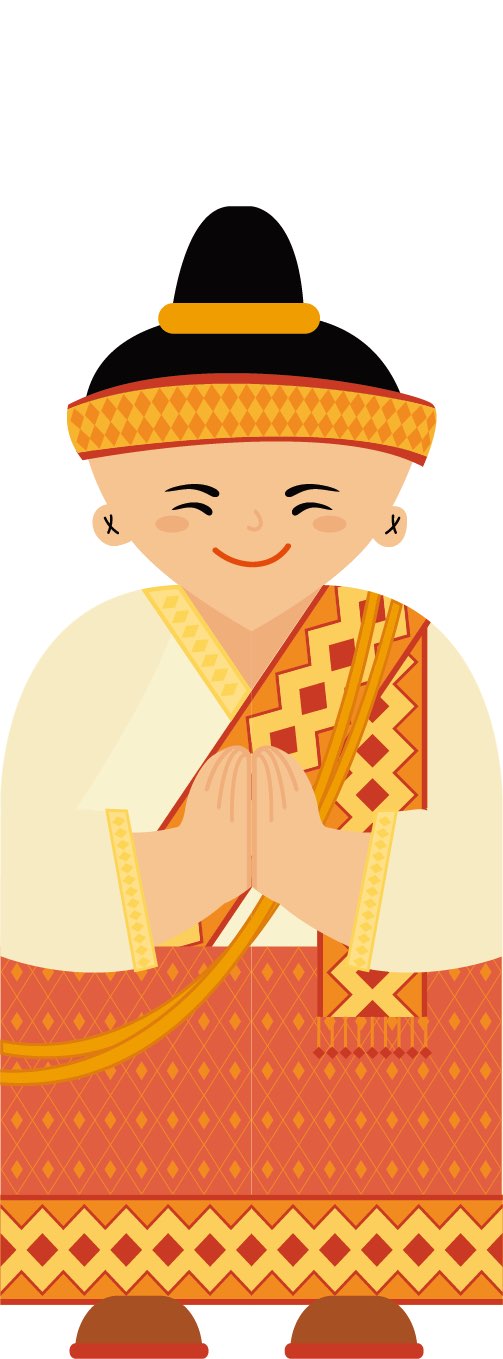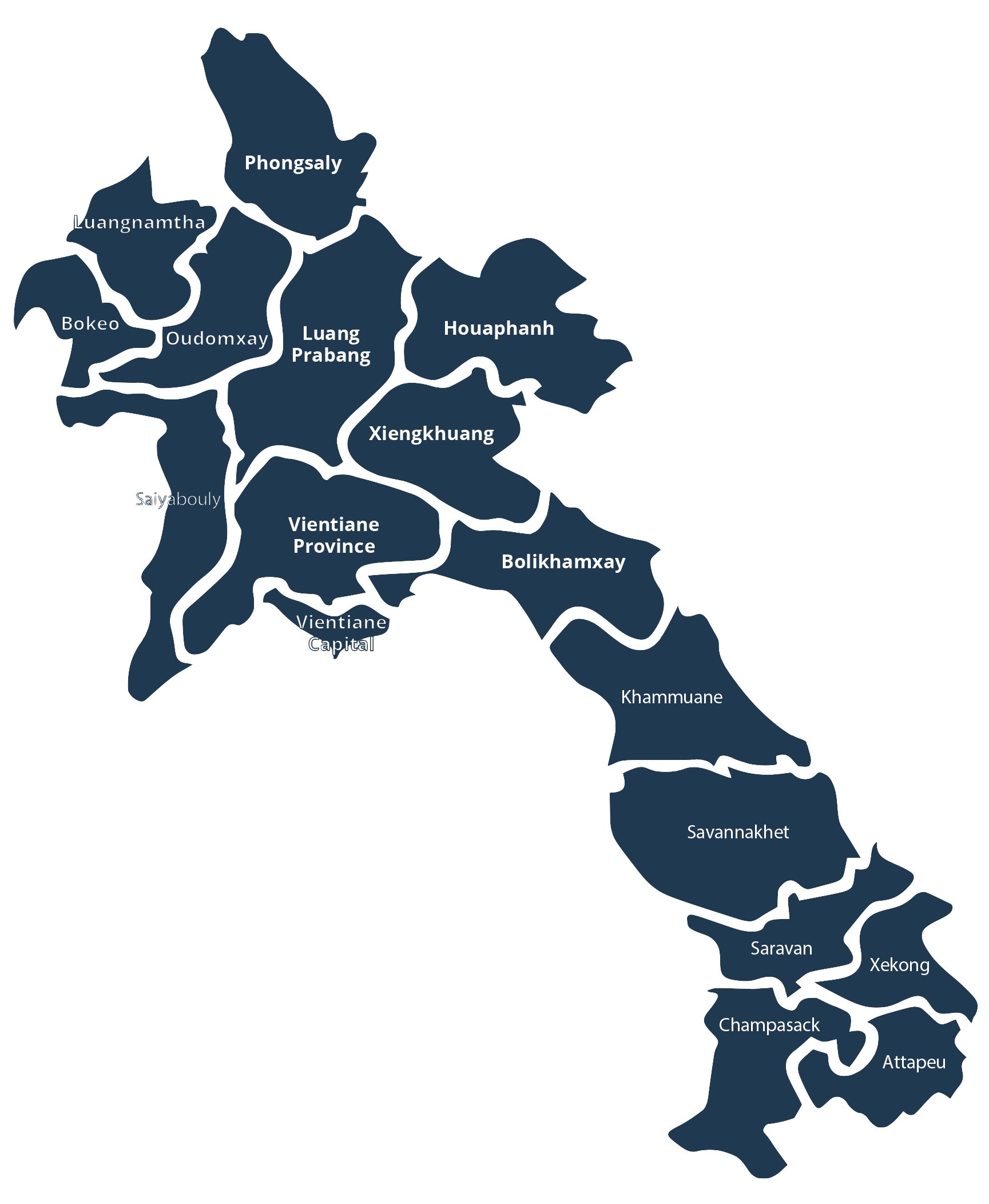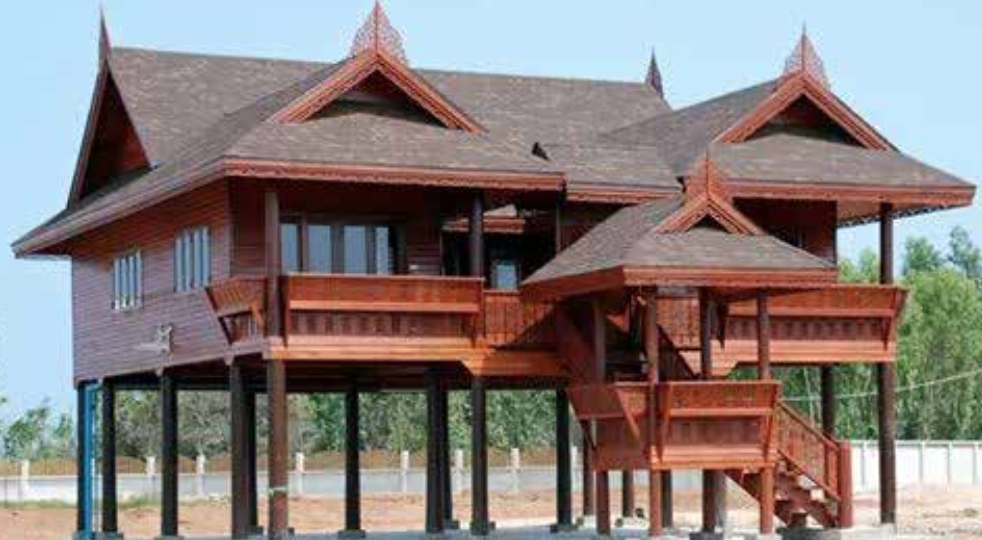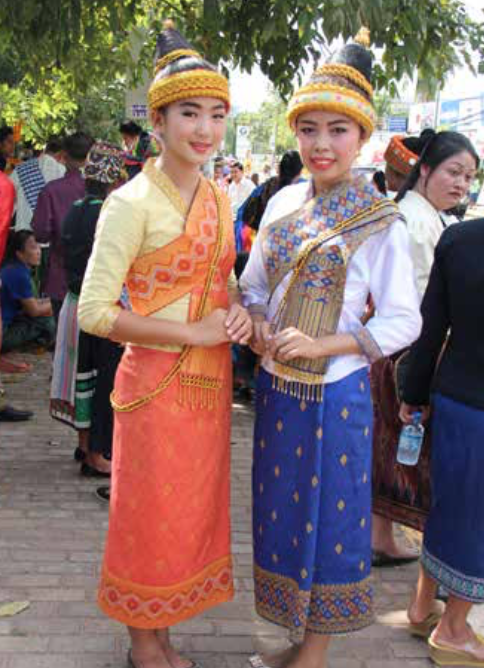

The Lao people have settled in Lao for hundreds of years. Even maybe as far back as six hundred years, which are the oldest written archeological evidence. The original territory of the Lao is thought to be north of the Mekong Ricer, to the Plane of
Ngang Sikieng River that is located in southern China. Now, the Lao live in every province of today’s Lao PDR. They also love in Thailand, Vietnam and Cambodia. The northeastern Thais are culturally and linguistically almost the same people.
They are the largest group in Laos, numbering 2,403,819 people. Females number 1,218,748 persons, or 52.5 percent.
The Lao have a rich cultural tradition. They have followed Theravada Buddhism for countries. In this Buddhism are practices of local animism. They believe in spirits, known as phi, that reside in all things, such as villages, houses, forest, rivers, the sky, crops and their own ancestors.
Every village will have a temple and it is usual for every family to have at least one son enter the monk-hood for a period of about two years. The Lao have 12 customs (Hith sip song) that means they will make merit in each month of the year. They have many other merit days (van boon) also, according to the traditional custom of each month. The significant festivals are the Lao New Year, which includes a boat racing festival, and Bounkathin, which is the offering of robes to monks, plus the time for males to enter priest-hood (Bounkong). The Lao people believe in kwans, which are bodily spirits. There are 32kwans in each person, and each is thought to be a guardian of a certain organ in the body. They are thought to occasionally wonder from the body, and if this is seen as a problem, then a ceremony is performed to bring the kwans back.
Today Lao families are generally nuclear, with perhaps several generations under the same roof. Men are monogamous, and both husband and wife will decide family issues. The husband is the head of the family, but women may be more industrious economically and control the finances. They will intermarry with all other groups in Laos. When they marry other Lao, it is normal for the husband to move into the wife’s family. Inheritance is usually matrilineal, often to the youngest daughter, as she will normally take care of parents in their old age.
The deceased are cremated in the temple compound. Buddhist monks will chant incantations. Drinks and food will be offered to family and friends for several days in a festive party. This may be a costly affair for the family, and some families can ill afford the cost.
The Lao have many occupations, but most are farmers. They are skilled farmers of both glutinous and ordinary rice. There is a saying that when you find sticky rice, you will find Lao people, who are very fond of eating sticky rice with fermented fish paste. Besides rice, Lao farmers grow vegetables, tobacco, cotton, fruit, cassava, and many other crops. The also practice fish farming and the raising of silkworms in mulberry trees.
Animal raised includes buffalo, cattle, pigs, poultry, and dogs. Some are involved in the logging business in which elephants are still used. They will fish in the rivers and lakes using traps and nets.

The Lao live in established villages, generally in the lowland. The most prominent structure in the small villages is usually the temple. Their traditional homes are large and comfortable, and usually sit on wooden or concrete poles or stilts. They are generally made of wood, cement or bamboo with thatched or tin roofs. Usually there is a large living room with two or three sleeping areas that are walled off the front of house is straight to the north and the other end to the south. A ladder is at the front of the house and also at the back balcony. The ladder always has an odd number of rungs.
The space under the house is used for agricultural equipment and animals. In the past, the rice husker as kept under the house. When visitors visit, they always take off their hat and shoes when entering the house.

Lao women wear traditional sarongs, known as phaa sin, which are usually made of silk, they made by very intricately woven, with many colors and designs, with this they wear a short-sleeved multi-colored blouse that will have shoulder sash which runs diagonally from the right hip to the left shoulder. A silver belt will finish the costume. They will also wear their hair up in a bun.
The men will wear long trousers and shirts. At homw they will wear a light cotton cloth wrapped around the waist called a panong.
Lao is the official name and the most common name. Historians are not sure where the name “Lao” come from. There are several myths concerning the Lao culture emerging from a gourd, and perhaps this word came from this. There are sub-groups of the Lao. These include Pouan, Kaleung, Bo, Ngoy and Ngo. The language is an Austro-Thai language and is in the Tai-Kadai language group on this language tree. They have their own written script. It is also the official language of government and used by every ethnic group in Laos.
Source: ປື້ມບັນດາຊົນເຜົາໃນ ສປປ ລາວ
Copyright © 2025. Her Works